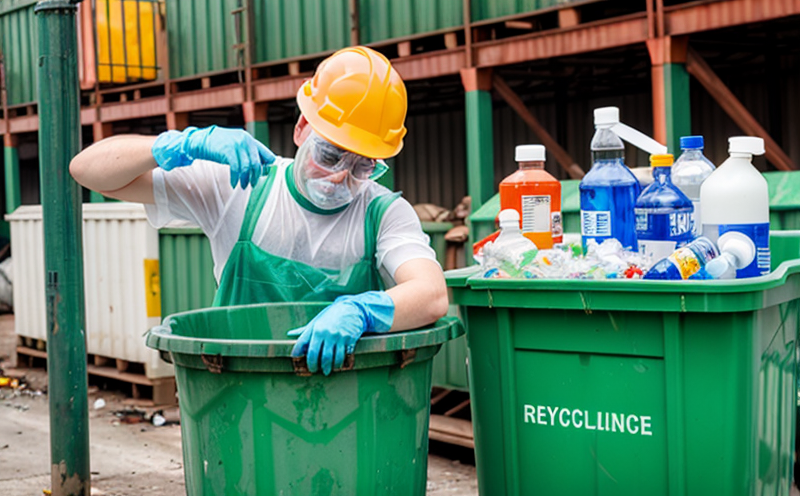ISO 16772 Arsenic Antimony Selenium Testing in Wastewater
The ISO 16772 standard provides a comprehensive framework for the determination of arsenic, antimony, and selenium in wastewater. This testing is crucial for ensuring compliance with environmental regulations and safeguarding public health. In industrial settings, these elements can be released into water systems through various processes such as mining, smelting, and chemical manufacturing.
The primary goal of this service is to accurately measure the concentrations of arsenic (As), antimony (Sb), and selenium (Se) in wastewater samples. These metals are toxic at high levels, posing risks to aquatic life and human health when they enter water supplies. Compliance with ISO 16772 ensures that facilities can manage these elements safely within permitted limits.
The testing process begins with the collection of wastewater samples from various sources such as industrial effluents or municipal sewage systems. Samples are then transported under controlled conditions to our laboratory, where they undergo rigorous preparation steps including dilution and digestion using strong acids like nitric acid (HNO₃). This step is critical for breaking down complex organic compounds and releasing the target elements into solution.
After sample preparation, the analysis proceeds via either inductively coupled plasma mass spectrometry (ICP-MS) or graphite furnace atomic absorption spectroscopy (GFAAS), depending on the concentration levels expected. Both methods offer high sensitivity and precision necessary for detecting trace amounts of these metals. The choice between ICP-MS and GFAAS depends largely on the nature of the sample matrix and the specific requirements of the client.
Once the analysis is complete, detailed reports are generated summarizing all findings alongside relevant ISO 16772 standards. These documents include raw data along with calculated concentrations, along with any necessary recommendations for mitigation strategies if levels exceed safe thresholds.
- Customer Impact and Satisfaction:
- Facilitating compliance with international standards improves reputation among stakeholders.
- Avoiding legal penalties associated with non-compliance saves financial resources.
- Enhancing operational efficiency through precise monitoring supports sustainable practices.
- Building trust within communities by demonstrating commitment to environmental responsibility.
In summary, adherence to ISO 16772 guidelines ensures that facilities are not only meeting legal requirements but also contributing positively towards protecting our environment and public health. By providing accurate and reliable testing services based on this standard, we aim to support clients in achieving these goals effectively.
Why It Matters
The importance of ISO 16772 lies primarily in its role as a benchmark for accurately measuring arsenic, antimony, and selenium concentrations in wastewater. These elements are known to be highly toxic at elevated levels, particularly arsenic which is classified by the World Health Organization (WHO) as one of the top ten chemicals of public health concern.
Environmental regulations demand strict control over metal discharges into water bodies to prevent contamination and protect ecosystems. By offering ISO 16772-compliant testing services, we help clients stay ahead of regulatory requirements while ensuring they meet their own sustainability goals. This not only reduces the risk of costly fines but also enhances corporate social responsibility (CSR).
From an operational perspective, accurate monitoring allows companies to optimize wastewater treatment processes leading to reduced costs and improved overall efficiency. Moreover, demonstrating compliance can foster better relationships with regulatory bodies and improve stakeholder confidence.
The significance of ISO 16772 extends beyond mere compliance; it plays a vital part in maintaining the integrity of our natural resources for future generations. Through precise quantification of these elements, we contribute to preserving water quality standards globally.
International Acceptance and Recognition
The acceptance of ISO 16772 extends across numerous countries worldwide due to its rigorous methodology and consistent results. This standard is widely recognized by environmental agencies and regulatory bodies globally as a reliable means for monitoring metal contaminants in wastewater.
Many nations have adopted or referenced ISO 16772 within their own national standards, emphasizing the importance placed on this international guideline. Compliance with these global standards helps ensure uniformity in testing practices across borders, fostering better collaboration and communication among countries involved in environmental protection efforts.
The widespread adoption of ISO 16772 underscores its value not only as a technical document but also as an instrument for promoting international cooperation on environmental issues. By aligning with this standard, laboratories contribute to the global effort aimed at safeguarding natural resources and human health.





